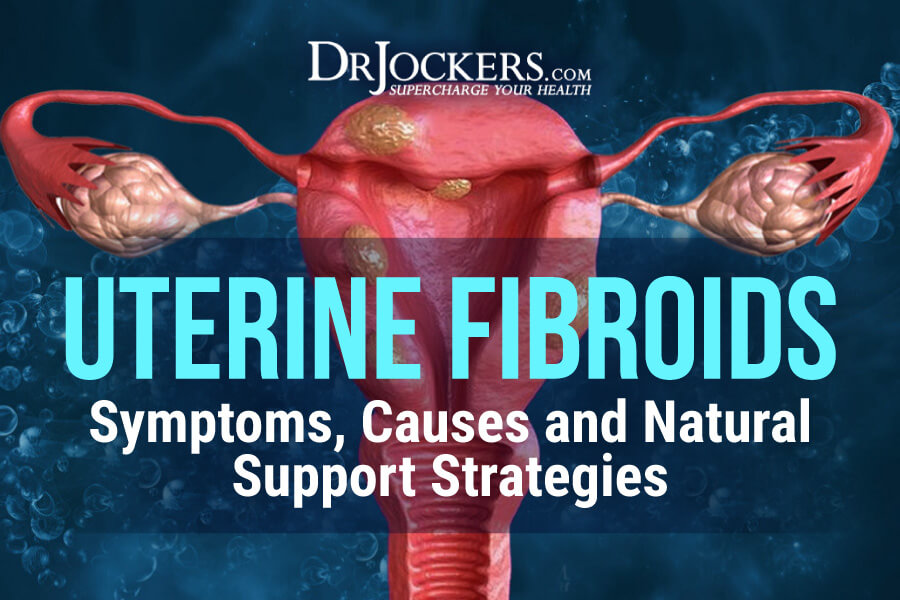
Uterine Fibroids: Symptoms, Causes and Natural Support Strategies
Uterine fibroids are non-cancerous tumor growths in or on the muscular wall of the womb that can cause morbidity for women, including menorrhagia, abdominal pain, pelvic prolapse, and infertility and miscarriage. Understanding the role of estrogen in fibroids is not only important for understanding the anatomy of fibroids but also for the development of successful therapeutics.
Current research has shown that fibroid tumors are a symptom of estrogen dominance and can be prevented or even reversed through a healthy lifestyle (1, 2, 3). In this article, you will discover 12 natural support strategies to help improve your hormone balance and help your body function better.
Even though most fibroids are asymptomatic, they are still the most common reason for hysterectomy. Fibroids are easiest to treat when they are small but they are also very hard to detect at this stage.
Very small fibroids rarely produce any symptoms and most do not know they have them. As uterine fibroids grow larger they cause menstrual bleeding to increase. This can become very painful especially during menstruation. Eventually, they can press on surrounding organs like the bladder and kidneys. This can become very serious and may require surgery.

Fibroids Cause Major Health Problems:
It is estimated that 60% of reproductive-aged women are affected, and 80% of women develop the disease during their lifetime. Several genetic, hormonal, and biological factors have been shown to contribute to the development and growth of fibroid tumors. Of these factors, estrogen is particularly critical since fibroids are considered estrogen dependent because no prepubertal cases have been described in the literature and tumors tend to regress after menopause.
Depending on the severity of the fibroids many doctors can remove only the fibroids and keep the uterus intact. This does not always solve the problem. About half of the women who keep their uteruses find that their fibroids grow back. Fibroids are responsible for about one-third of all hysterectomies (4, 5).
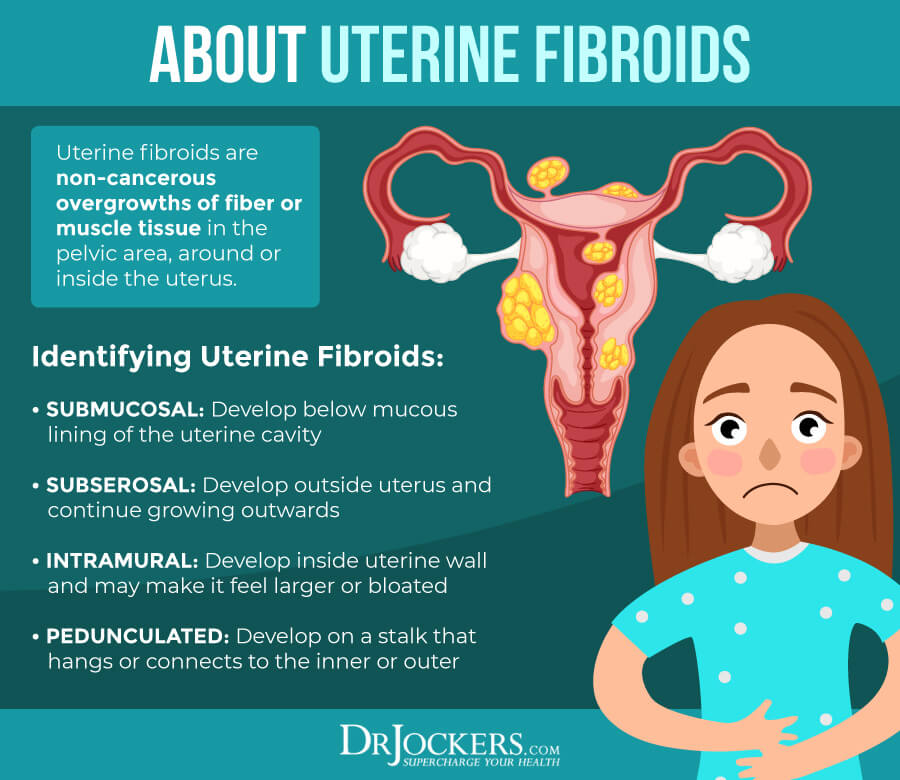
Risk Factors For Uterine Fibroids
As in the case with endometriosis, an impaired or sluggish liver, blood sugar imbalance, chronic inflammation, hormone imbalance, and toxins appear to be major contributing factors in the development of uterine fibroids.
Women with uterine fibroids are often estrogen dominant and have low progesterone levels (6). Stabilizing estrogen/progesterone levels can cause fibroids to shrink and dissolve all together. This is likely due to progesterone’s ability to help speed up the clearance of estrogens from tissue.
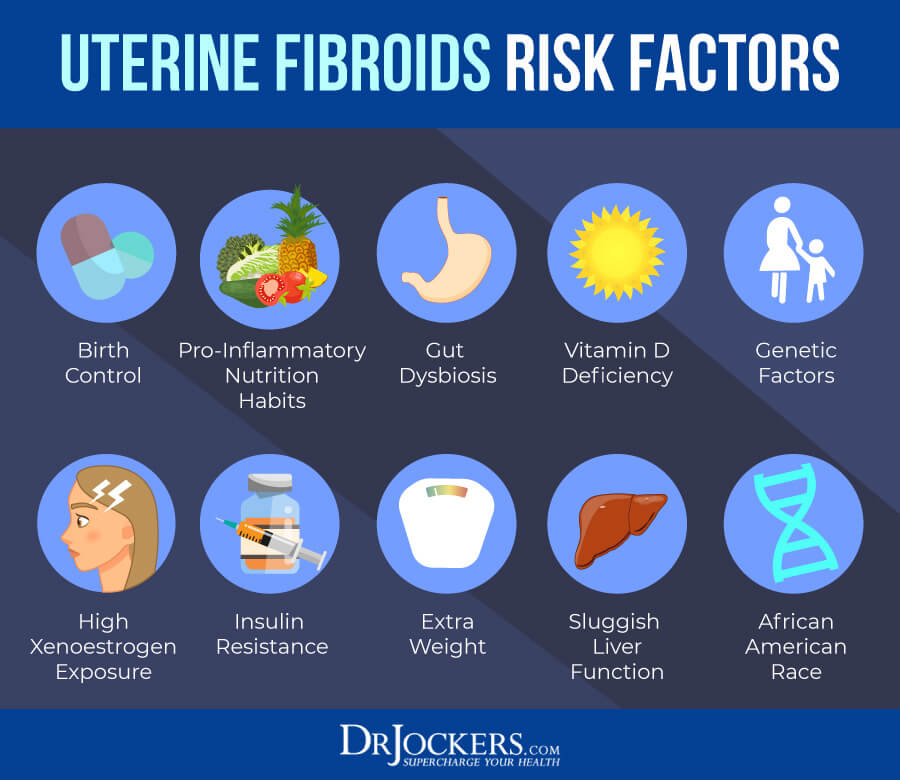
Major Causes of Estrogen Dominance:
The major cause of estrogen dominance in our current society comes from the overuse of chemicals & preservatives. An endocrine-disrupting compound was defined by the U.S. Environmental Protection Agency (EPA) as “an exogenous agent that interferes with synthesis, secretion, transport, metabolism, binding action, or elimination of natural blood-borne hormones that are present in the body and are responsible for homeostasis, reproduction, and developmental process.”
Xenoestrogens are artificially made compounds produced by industry. These differ chemically from archiestrogens (naturally occurring) produced by living organisms (7, 8).

Xenoestrogens and Uterine Fibroids
Interference with these natural biological processes due to xenoestrogens can predispose women to infertility, ectopic gestation, poor pregnancy outcomes, and other reproductive disorders that may be programmed during development (e.g., endometriosis, uterine fibroids). Liver congestion is another major cause for estrogen metabolites to be recirculated in the body rather than being excreted as a waste product. (9)
Xenoestrogens mimic the effects of true estrogen and interact with cellular receptor sites. This process contributes to estrogen excess and blocks the effects of true estrogen. To make matters worse, these endocrine disruptors lodge in fat cells where they are resistant to breakdown (10, 11).
Many of these chemicals will act in a synergistic effect when combined with other endocrine disrupters. This synergistic process exponentially enhances their effects within the body causing major problems at the cellular level.
Most Common Sources of Xenoestrogens:
Commercially Raised Animal Products:
These include CAFOs (conventional raised cattle), dairy cows, chickens that are not pasture raised, and really just about any conventionally raised animal. Always look for USDA Organic labeling and pasture raised chickens, etc.
Plastics & Canned Goods (many have plastic lining)
Many canned goods are lined with BPA (Bisphenol A – a very well-known and recognized plus ubiquitous endocrine disruptor) and we even need to be cognizant of what other lining they use as an alternative to BPA on products labeled as “BPA Free” as these are not regulated and could pose undesired harm as well and be potentially worse than BPA itself!
Personal Care Products (makeup, lotion, & perfumes)
I know we all want to feel soft, smell nice, and look pretty, especially women. Many personal care products are laden with endocrine disrupting chemicals and heavy metals that can be deleterious to our health from constant exposure.
Oral Contraceptives
Oral contraceptive use is as common these days as changing diapers on a baby. Women pop these pills left and right for different reasons. Whether birth control or hormone manipulation, these pills come with some not so attractive side effects. Oral contraceptives that contain a mixture of estrogen and progestin may increase the risk of nutrient deficiencies in vitamins B6, B12, and folate.
These are very critical nutrients, that when depleted, will disrupt methylation, DNA synthesis, and neurological function. In other words, resulting in depression, anemia, and poor cognitive function (brain fog, impaired memory). However, a deficiency in one can certainly alter the function of another. (12,)

Pharmaceutical Medications
Over the counter drugs and prescription medications obviously pose a danger to the populace. With the opioid epidemic to over-prescribed anti-depressants, anti-biotics, and sleep aids, these drugs have life altering effects for the individual.
For example, PPIs (proton pump inhibitors) such as Nexium, Prilosec OTC, etc. have detrimental effects on the gut microbiota due to gastric acid suppression leading to unwanted overgrowths of pathogens like helicobactor pylori, clostridia and contribute to many other undesired effects on human health mediated through alteration of the gastrointestinal microbiome. (13)
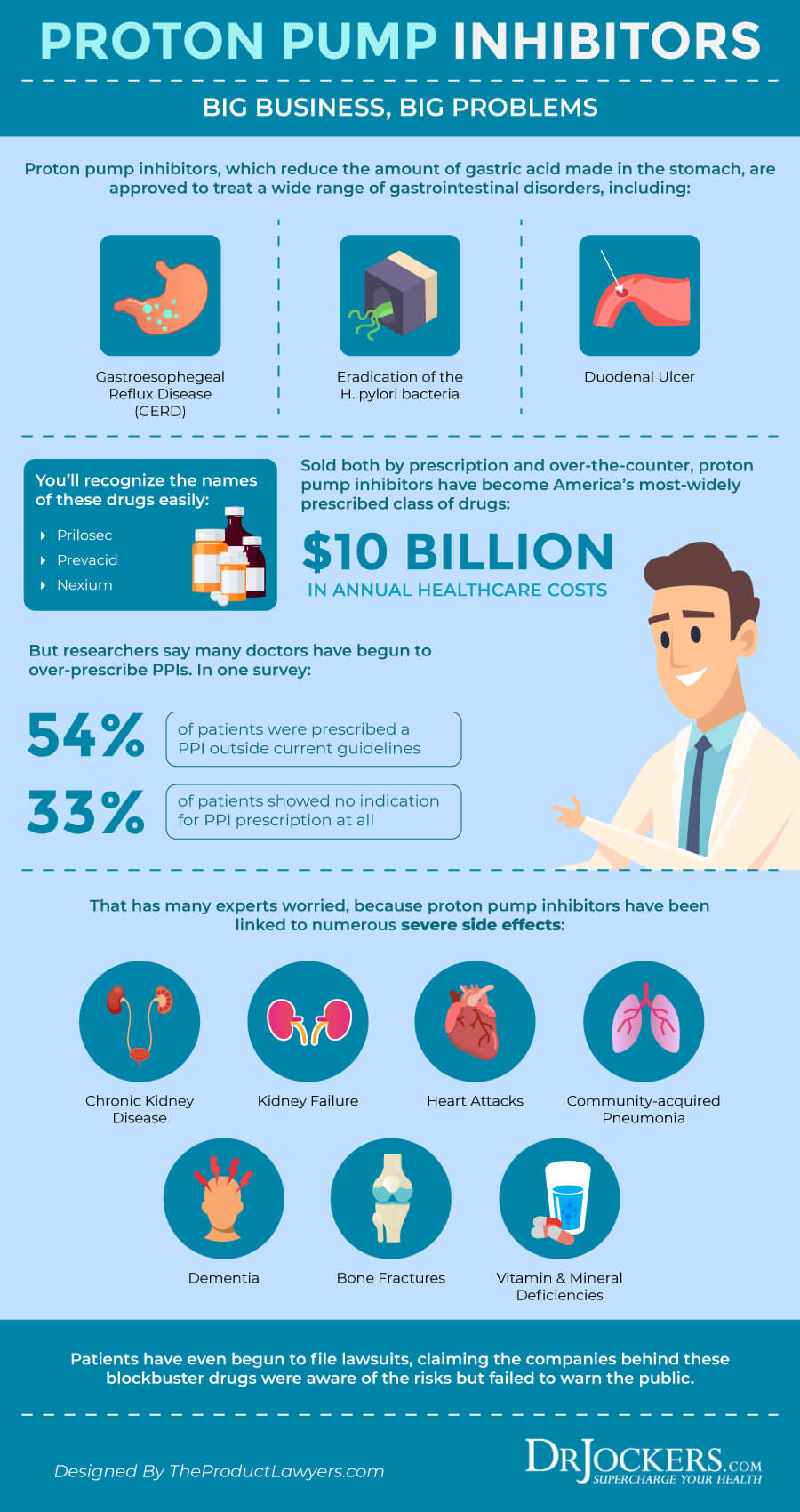
Food Additives & Preservatives
There are many studies indicating that food additives and preservatives will induce asthma, eczema, liver toxicity, ADD/ADHD, leaky gut, and disruption of digestive enzymes. Many children with behavioral disorders like ADD show reactions to Red 40 and when this substance is removed mood and behavior is greatly improved.(14)
Styrofoam Products
In Styrofoam and PS (polystyrene) cups studies, hot water was found to be contaminated with styrene and other aromatic compounds. It was observed that temperature played a major role in the leaching of styrene monomer from Styrofoam cups. Paper cups were found to be safer for hot drinks.
I personally use a Berkey countertop water filter device with fluoride filters added. I also re-use my Mountain Valley glass bottles to refill and take with me wherever I go. Bring in your own stainless steel cups to Starbucks rather than using their plastic cups. The heat from your java will create steam on the underside of your plastic lid and drip down into your drink allowing for a constant BPA exposure! (15)
Laundry & Dishwashing Detergents
The environmental working group has an exhaustive list of products that are rated from a grade of A to F. They list the potential dangers of harmful ingredients that their team researches and they publish this. Many modern laundry detergents are loaded with endocrine disrupting chemicals that will interfere with the body’s systems. (16)
Household Cleaners & Air Fresheners
Perfumes/colognes, air fresheners, and dryer sheets to name a few are well studied and known to induce asthma as well as endocrine disruption. From the fragrances you hang in your car, plug into your wall, to the Windex or antiseptic wipes for your countertops all contain BPAs, parabens, phthalates, triclosan and other harmful compounds.
This could be one of the reasons you have weight-loss resistance, thyroid dysfunction and/or respiratory problems! Some phthalates inhibit testosterone synthesis and antimicrobials such as triclosan suppress thyroid hormone and are estrogenic. The labeling terms “natural,” “nontoxic,” and “green” are unregulated and require no standardized ingredient information.
In a recent study researchers found that the VOC composition of “green”-labeled fragranced products was not significantly different from that of other fragranced products with regard to number of hazardous chemicals as defined under U.S. federal laws. (17)
Pesticides and Herbicides
Residues of pesticides can be found in a great variety of everyday foods and beverages, including for instance cooked meals, water, wine, fruit juices, refreshments, and animal feeds. Pesticides residues have also been detected in human breast milk samples, and there are concerns about prenatal exposure and health effects in children.
Glyphosate is the active ingredient in the herbicide Roundup. Glyphosate can display endocrine-disrupting activity and promotes many dysfunctions in the body. (18)

Minimize Xenoestrogen Exposure:
To prevent or eliminate fibroid tumors it is essential that a woman minimize her exposure to xenoestrogens. Additionally, she must reduce her intake of sugar, caffeine, vegetable oil, hydrogenated oil, alcohol, & prescription/OTC medications which all have powerful estrogenic effects.
Elevated stress must be dealt with since it wears out the adrenals and leads to impaired production of progesterone. The individual should be focusing on good sleep, relaxation techniques and lots of deep breathing as these all help to balance hormonal function.
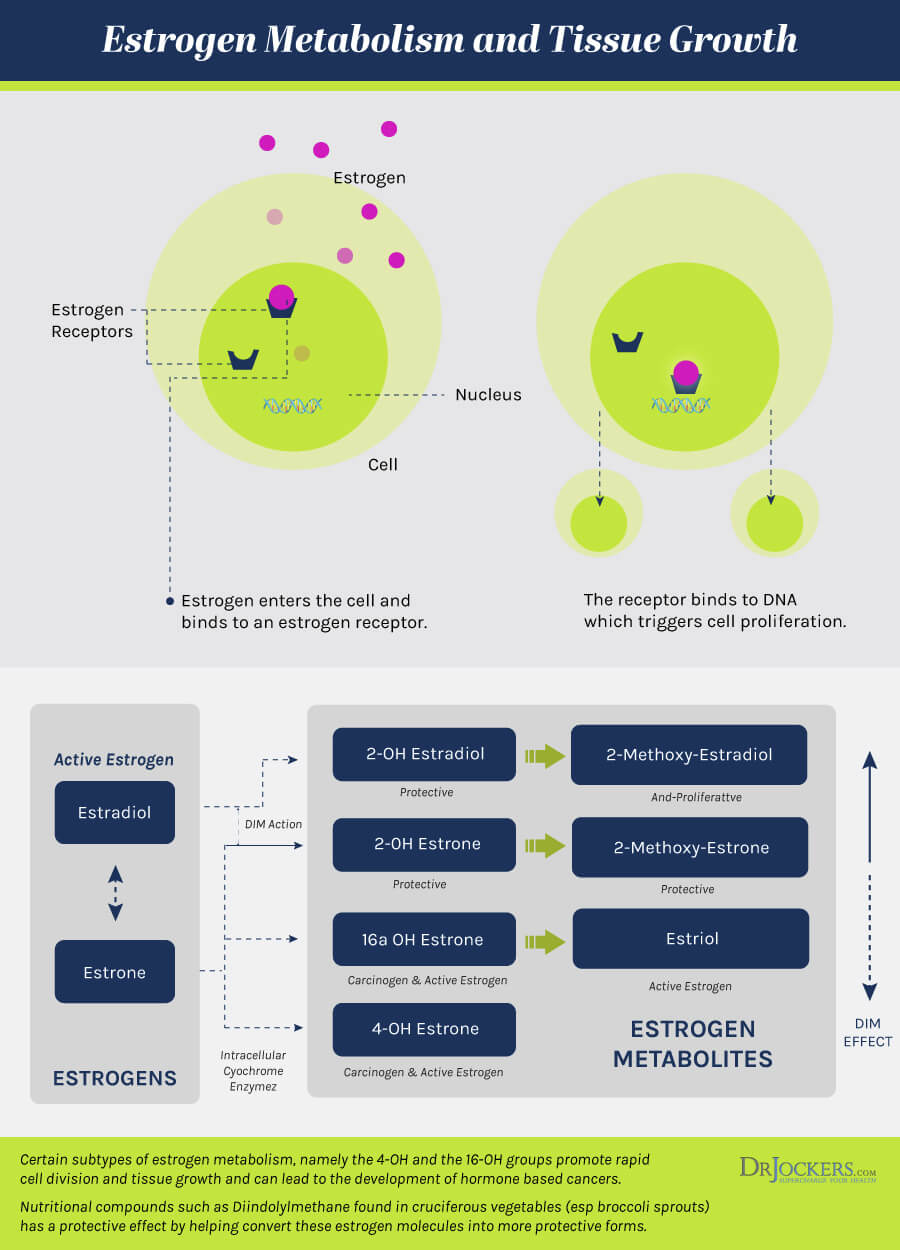
Hormone Balancing Diet:
To effectively stabilize estrogen/progesterone levels one should consume a diet rich in vegetables of all kinds, sprouts, berries, grapefruits, free-range & grass-fed meats, coconut, avocado, & lemon, & extra-virgin olive oil. This diet should be low carbohydrate, moderate protein and moderate fat.
This will stabilize the blood sugar and help the body burn through fat stores and detoxify estrogen more effectively. Cruciferous vegetables are preferred due to their high content of indole-3-carbonyl and sulforaphane which powerfully enhances estrogen metabolism and detoxification (20).
Natural Support Strategies For Hormone Health:
It is possible to improve hormone levels with natural support strategies and this may improve uterine fibroids. This is not an exhaustive list but it is a great start for someone looking to do this. It is important to note that these strategies are not at this time FDA approved to prevent, mitigate, treat or cure uterine fibroids and should not be confused as such.
Remember that each individual is different and some of these strategies will make a bigger impact than others depending upon your unique circumstances. I always advise working with a functional health clinician in order to get a customized plan based around your unique health challenges.
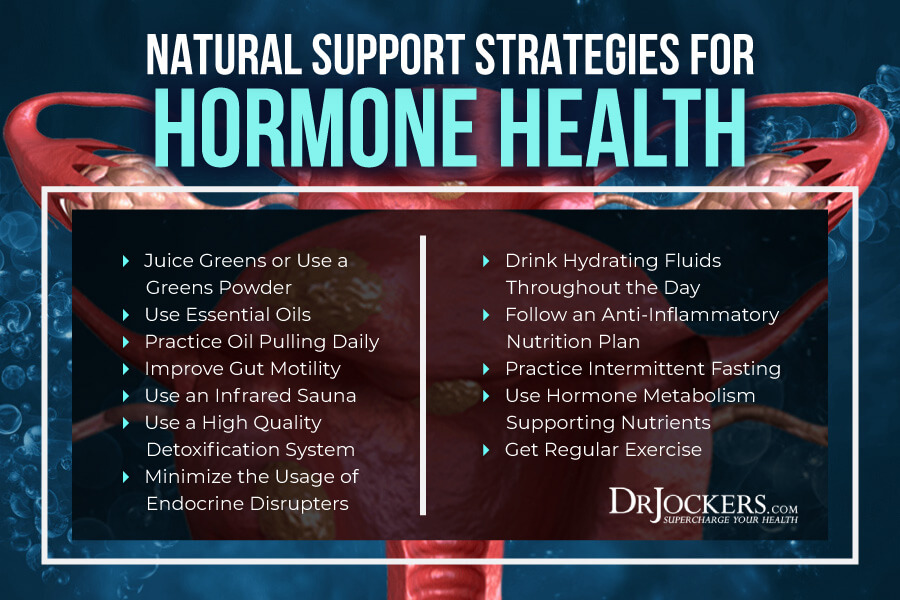
Anti-Inflammatory Healing Diet
One of the best strategies for preventing and improving uterine fibroids is to consume an anti-inflammatory, healing diet. This nutritional strategy removes foods that cause inflammation and includes anti-inflammatory foods like organic, non-GMO vegetables, fruits, healthy fats, and clean protein.
This healing diet reduces inflammation, stabilizes blood sugar, reduces toxic load, provides necessary nutrients, and supports healthy blood pH levels. The first 3 steps include taking out grains and high sugar and starchy foods that drive up blood sugar levels, avoiding damaged fats and focusing on eating healthy fats and looking for organic, pasture-raised animal products.

Foods to Avoid
Uterine fibroids is an inflammatory condition, so it is critical to avoid highly inflammatory foods. Pro-inflammatory foods are refined sugars and grains, and any foods that are easily metabolized into sugar (high glycemic foods). These foods upregulate inflammation and create extra acidity in the tissues.
Conventional dairy products and gluten should be avoided if you have endometriosis. Gluten and A1 casein, a protein found in conventional dairy, stimulate the release of inflammatory cytokines and affect immune function.
Meat and dairy from conventionally raised animals and farmed fish should be avoided. As discussed above, these foods contain endocrine disruptors such as hormones, steroids, pesticides, GMOs, and antibiotics.
Processed foods contain toxic additives and preservatives. Processed vegetable oils, such as canola, grapeseed, and safflower, promote inflammation and should also be eliminated.

Foods to Include
The foods you should be eating on an anti-inflammatory, healing diet are whole, unprocessed foods. It is important to eat organic foods because pesticides can affect estrogen and other hormones.
Choose grass-fed, pasture-raised, wild-caught meats and fish. Enjoy a variety of lower carbohydrate, low glycemic, colorful vegetables, and fruits for their abundant antioxidants and phytonutrients. Plentiful amounts of herbs are a powerful addition to a healing diet.
Including a variety of relatively low-carbohydrate vegetables is an important part of an anti-inflammatory diet. Cruciferous vegetables such as broccoli, cauliflower, cabbage, kale, bok choy, and Brussels sprouts contain high levels of phytoestrogens that act like vitamins for endometriosis. These vegetables compete to occupy estrogen receptor sites to prevent estrogen from exerting its effects on the cell.
Low glycemic fruits include berries, lemons and limes, grapefruit, and granny smith apples. Berries and apples are high in powerful antioxidants called polyphenols.
Healthy fats are a very important part of a healing diet. Healthy fats are found in coconut, olives, avocados, and their oils and in grass-fed butter and ghee. Omega-3 fatty acids and conjugated linoleic acid (CLA) found in wild caught salmon and grass-fed beef and dairy are fats with many health benefits. These healthy fats are an efficient source of fuel for the body to combat inflammation.
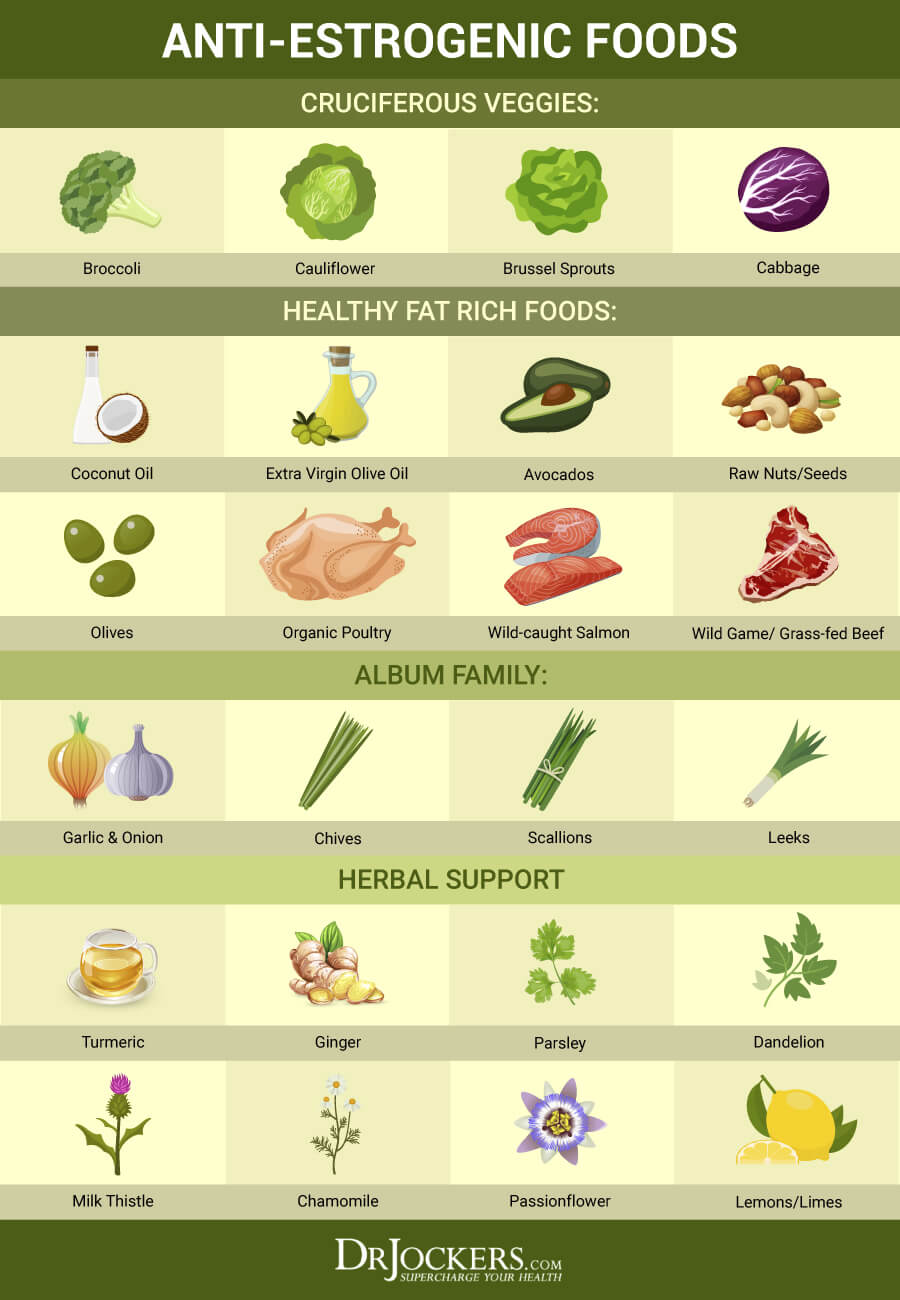
Balance Blood Sugar
It is important to balance your blood sugar to balance your hormones. Poor blood sugar control leads to elevated insulin and cortisol which can cause the release of estrogen. These factors also lead to deficiencies in magnesium, vitamin C, and vitamin B6 which are important for neutralizing bad estrogen metabolites in the liver.
Consuming an anti-inflammatory diet eliminating sugars and refined carbohydrates is critical to balancing blood sugar. Certain nutrients also help stabilize blood sugar levels.
It can also be helpful to find a blend of nutrients that support healthy blood sugar and reduce inflammation, including fenugreek, Gymnema, bitter gourd, berberine, cinnamon, vanadium, B vitamins, and chromium. The mineral chromium activates the glucose transporter molecule within the cell called GLUT4. Chromium can improve blood sugar levels, insulin sensitivity, and lipid profiles.
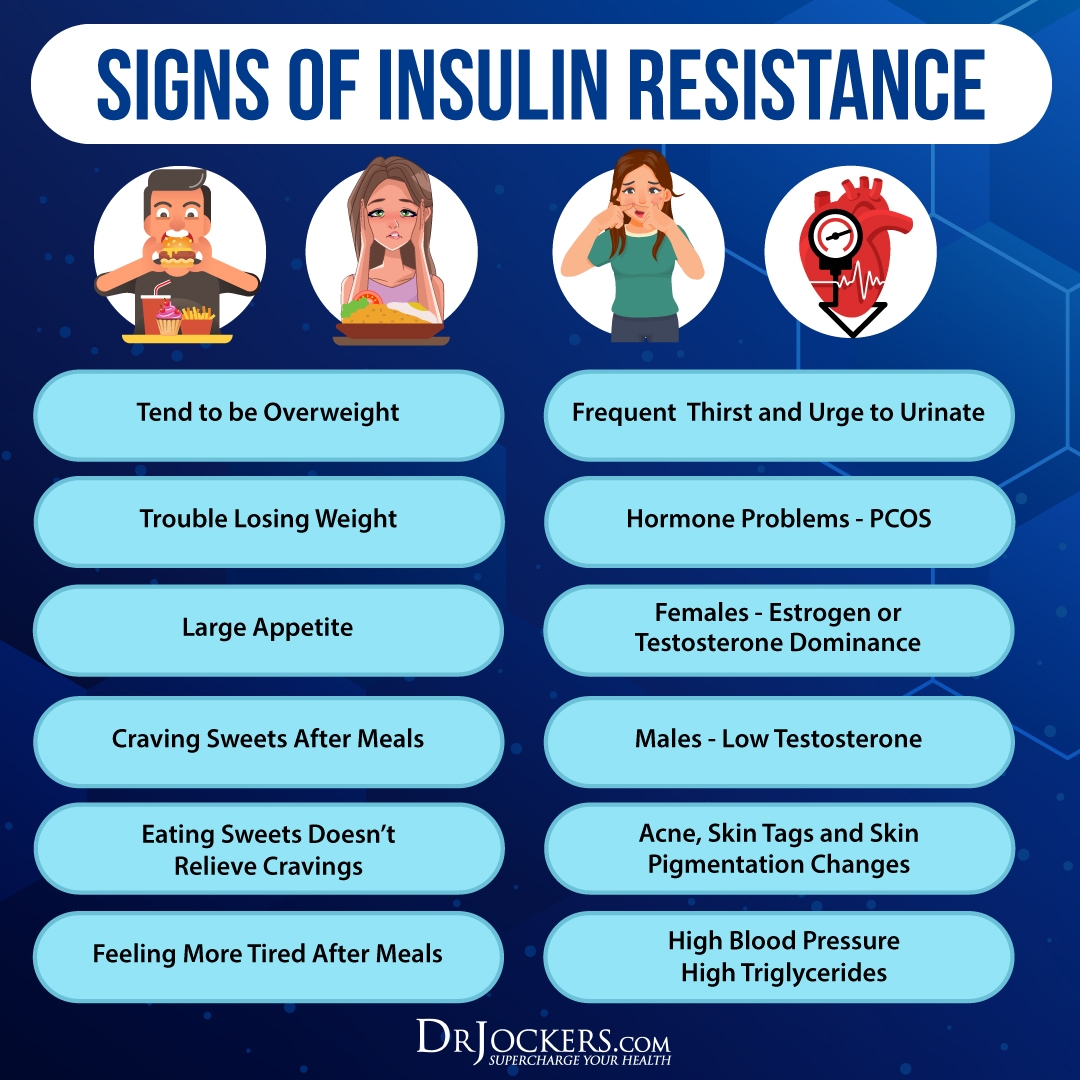
Correct Hormonal Imbalances
When progesterone declines from the natural aging process or from high levels of chemical, physical and emotional stress, this causes estrogen dominance. Uterine fibroids is one of the numerous symptoms of estrogen dominance, along with hot flashes, fatigue, weight gain, thyroid issues, PMS, and much more.
There are several supplements that can help eliminate xenoestrogens from your body and encourage healthy estrogen metabolites. Both diindolylmethane (DIM) and sulforaphane glucosinolate (SGS) from broccoli sprouts and other cruciferous vegetables act to support phase I and II of estrogen metabolism. These compounds can help balance estrogen and progesterone, restore proper estrogen metabolite ratios, improve hormonal function, and reduce symptoms of estrogen dominance.
Supplementing with vitamin B6 can help boost progesterone to balance excess estrogen. Vitamin B6, along with vitamins B1 and B2, assists liver enzymes in removing excess estrogen from the body.
Additionally, certain herbs such as chaste berry extract, chrysin, green tea extract, black cohash, DIM, broccoli seed extract and resveratrol all work great to relieve menstrual pain and improve the female hormone balance. You can find supplements that have a few of these herbs in clinical dosages.
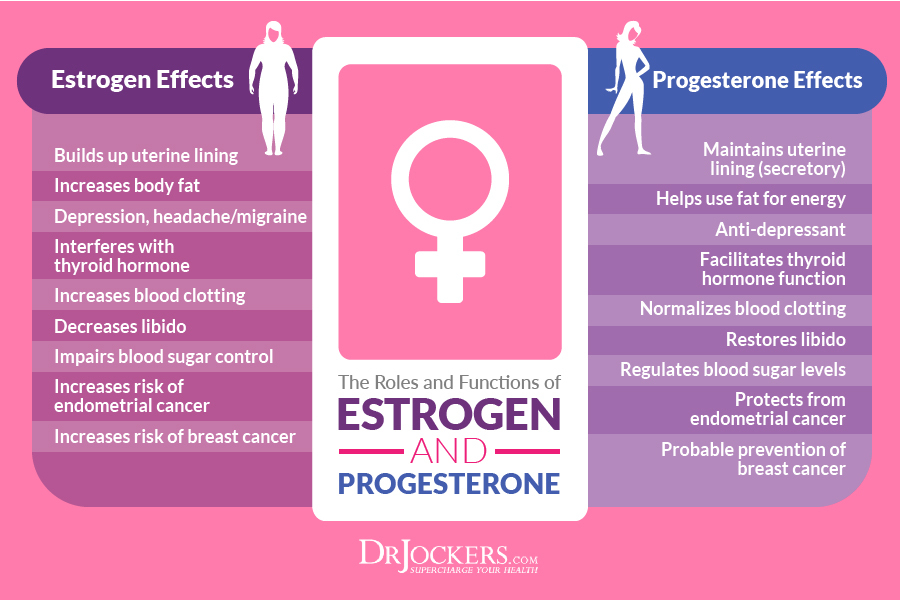
Omega-3 Fatty Acids
Uterine fibroids are associated with inflammation, pelvic pain, and hormonal imbalances. Omega-3 fatty acids help to reduce inflammation, relieve pain, and regulate hormone production. These important fatty acids also improve insulin sensitivity which is important for balancing blood sugar.
Omega-3 fatty acids are essential fats that are found in fatty fish such as wild-caught salmon and sardines, grass-fed meats, pasture-raised eggs, nuts (especially walnuts), and seeds (flax, hemp, and chia seeds). Flax, hemp and chia seeds have the added benefit of improving estrogen levels in the body.
Plant based omega 3’s such as flax oil only contain the small chain omega 3 called ALA and do not have any DHA. It is very hard for our body to convert ALA into DHA, so it is best to get a high-quality fish or krill oil that is rich in EPA and DHA. You want to find a brand that is molecularly distilled to take out any heavy metals and other unwanted contaminants.
Be sure to discuss with your physician before using as fish oils have a blood thinning affect and can be contraindicated if you are on blood thinning medications.
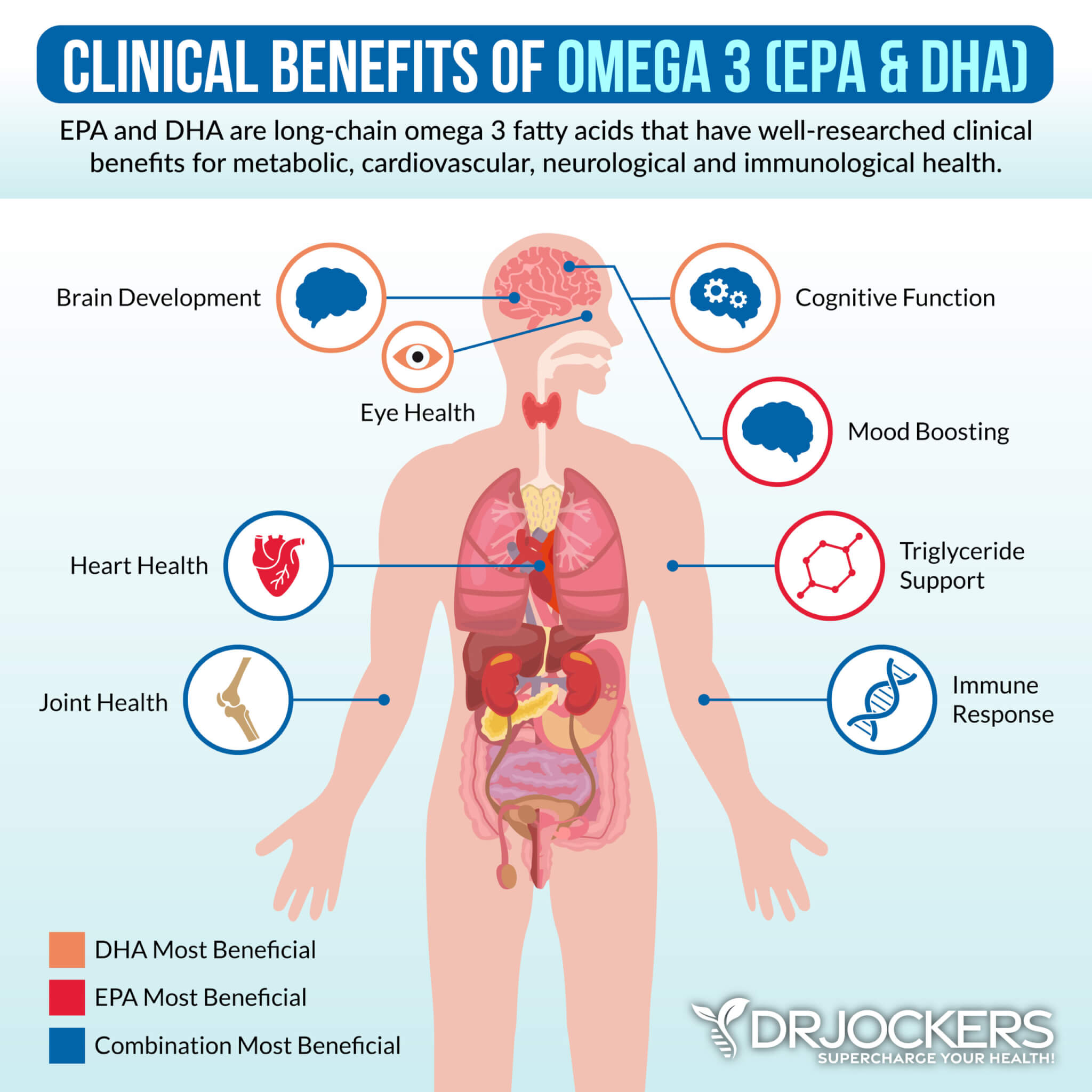
Magnesium
Women with uterine fibroids often have low levels of magnesium due to estrogen dominance. Menstruation can further deplete their magnesium. Magnesium is a crucial nutrient that supports over 300 physiological processes or functions in the body. It is called the “master mineral” and plays an important role in regulating hormone levels.
The top food sources of magnesium are leafy greens such as Swiss chard and spinach, sea vegetables, sprouts, and avocados. Grass-fed dairy and wild-caught fish are rich in magnesium. Pumpkin seeds, nuts, dark chocolate, and coffee are also good sources of magnesium.
Boosting your magnesium level is important for hormonal balance and overall health. There are several great forms of magnesium supplementation including magnesium malate, lysinate, citrate, orotate and glycinate. I also really like magnesium L-threonate, the only form of magnesium proven to cross the blood-brain barrier.
Other great ways to get magnesium are Epsom salt baths and a topical cream or spray. When you take in magnesium topically, it bypasses the digestive tract and gets right into the blood stream.
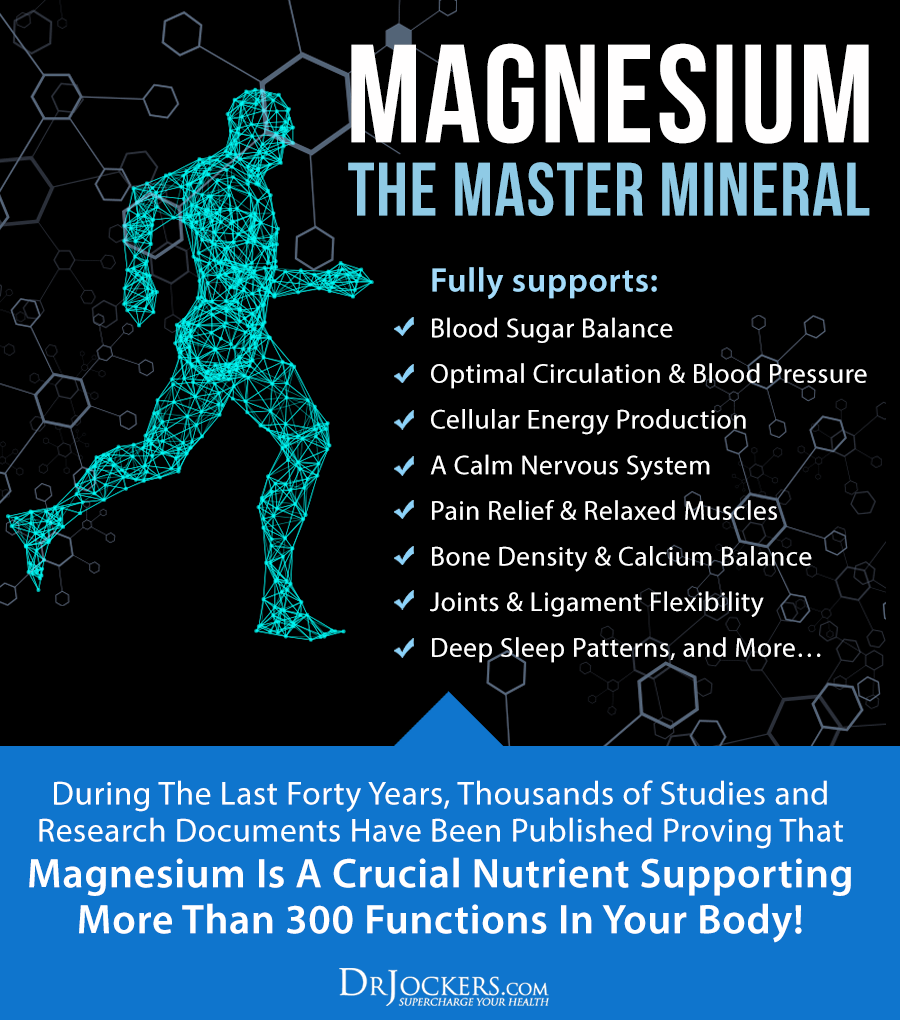
Vitamin D
Vitamin D is an important factor in the prevention and treatment of many chronic diseases. Low levels of vitamin D have been associated with uterine fibroids (21).
D3 is the biologically active form of vitamin D. It is more potent in raising and maintaining vitamin D concentrations than D2. Vitamin D3 is created in your skin in response to sun exposure. Aim to get 15-20 minutes of sun exposure daily.
The best dietary sources of vitamin D are wild-caught salmon and fatty fish, cod liver oil, grass-fed butter, and raw cheese, egg yolks, mushrooms, and beef liver. The ideal range for vitamin D3 levels is between 50-80 ng/ml. Get tested regularly and look to get regular sun exposure and take vitamin D3 supplements to optimize your levels.

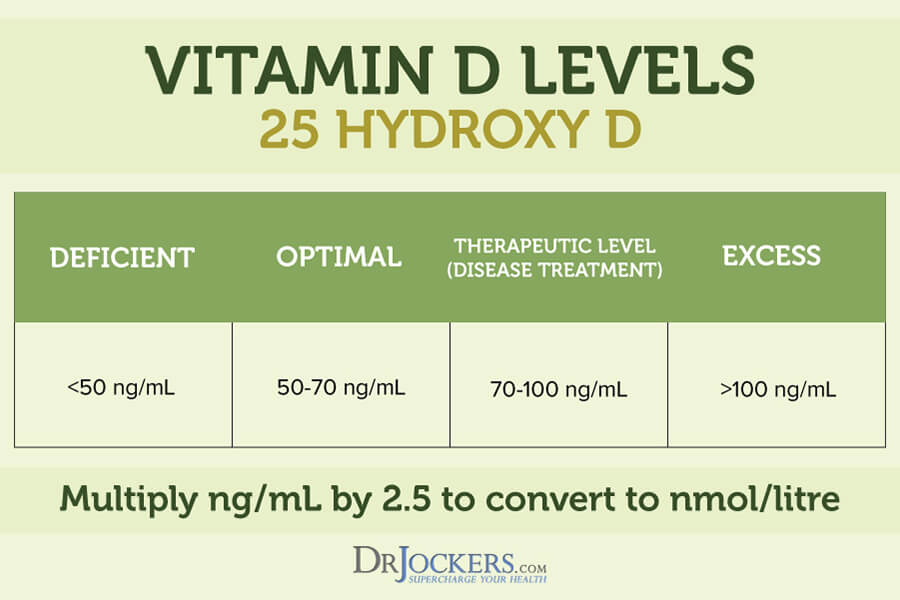
Milk Thistle
Detoxifying your liver can naturally balance hormones. Milk thistle protects the liver from damage and enhances the detoxification process. It speeds up estrogen clearance from the body. Milk thistle also contains a flavonoid complex which is important for protecting cells against free radical damage and inflammation.
The liver is responsible for breaking down and eliminating excess hormones from the body. If the liver is not functioning properly, older hormones can recirculate into the bloodstream in an even more toxic form than when they originally entered the liver. These toxic forms of estrogen can dramatically increase the risk of uterine fibroids and other issues.

Berberine
Berberine is a plant alkaloid derived from a variety of herbs, including Oregon grape root and Goldenseal. It modulates the immune system and has numerous anti-inflammatory effects. Berberine repairs intestinal permeability, stabilizes blood sugar, and neutralizes the bacterial toxin LPS (22). LPS is often high in women with uterine fibroids.
Berberine has been shown to inhibit the growth of uterine tissue (23). It is also a great liver detoxifying herb, making it helpful for reducing excess estrogens found with uterine fibroids.
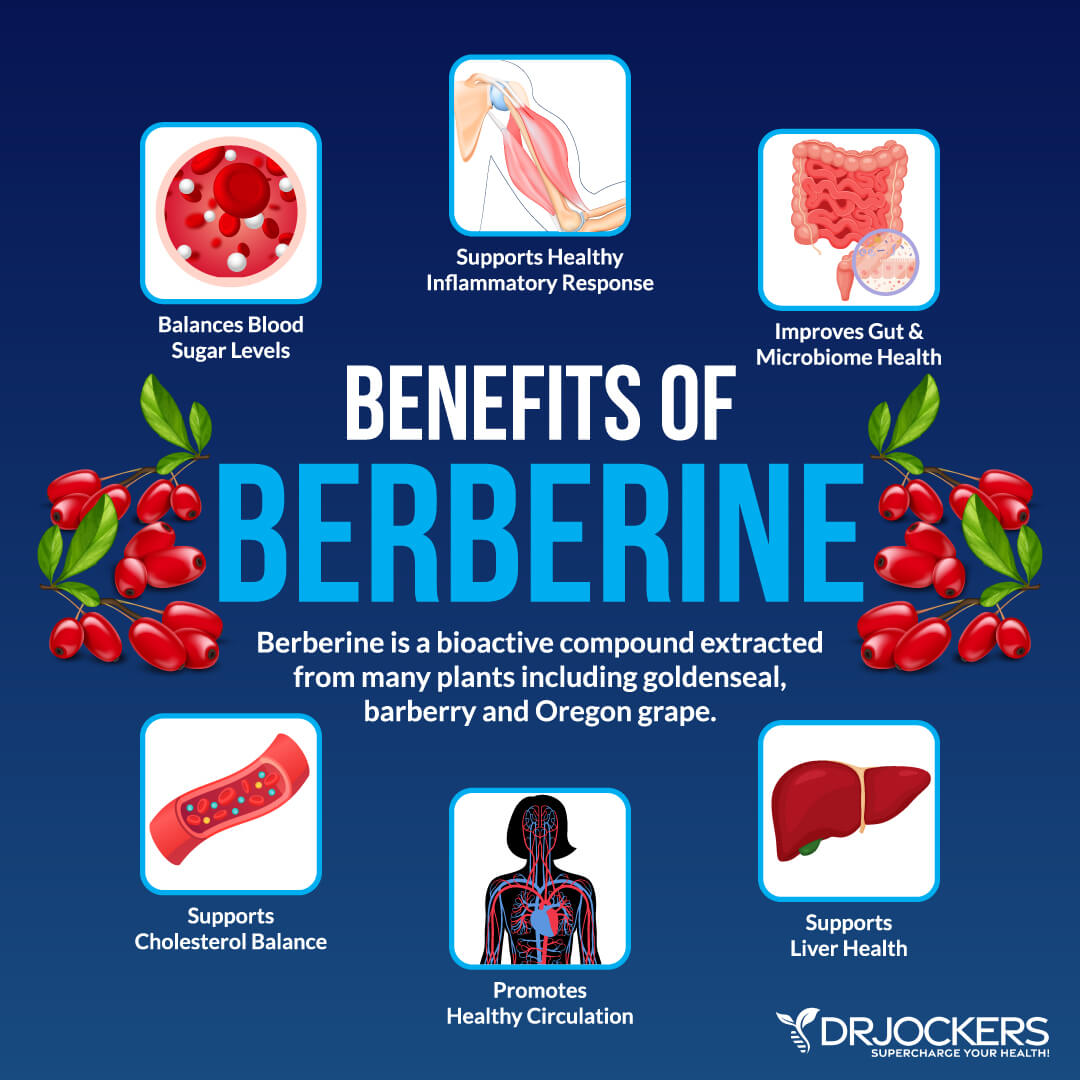
Glutathione
Glutathione has been coined with the term “master antioxidant” due to its essential role in maintaining exogenous antioxidants such as vitamin C & E in their active form. Glutathione is like the cell’s security guard protecting the genetic equipment from outside attack.
It is estimated that each cell in the body withstands 10,000 hits by free radicals each day. Glutathione disarms these free radicals before they wreak havoc and cleans up the oxidative stress related damage that has occurred.
NAC is the acetylated form of the amino acid cysteine which is naturally present in substances like garlic. You can also find liposomal and S-acetylated forms of glutathione that bypass the digestive system and go right into the cells and improve cellular glutathione levels. The better your glutathione levels, the more effectively you will detox bad estrogen metabolites and reduce inflammation in the uterus, endometrium and ovaries.
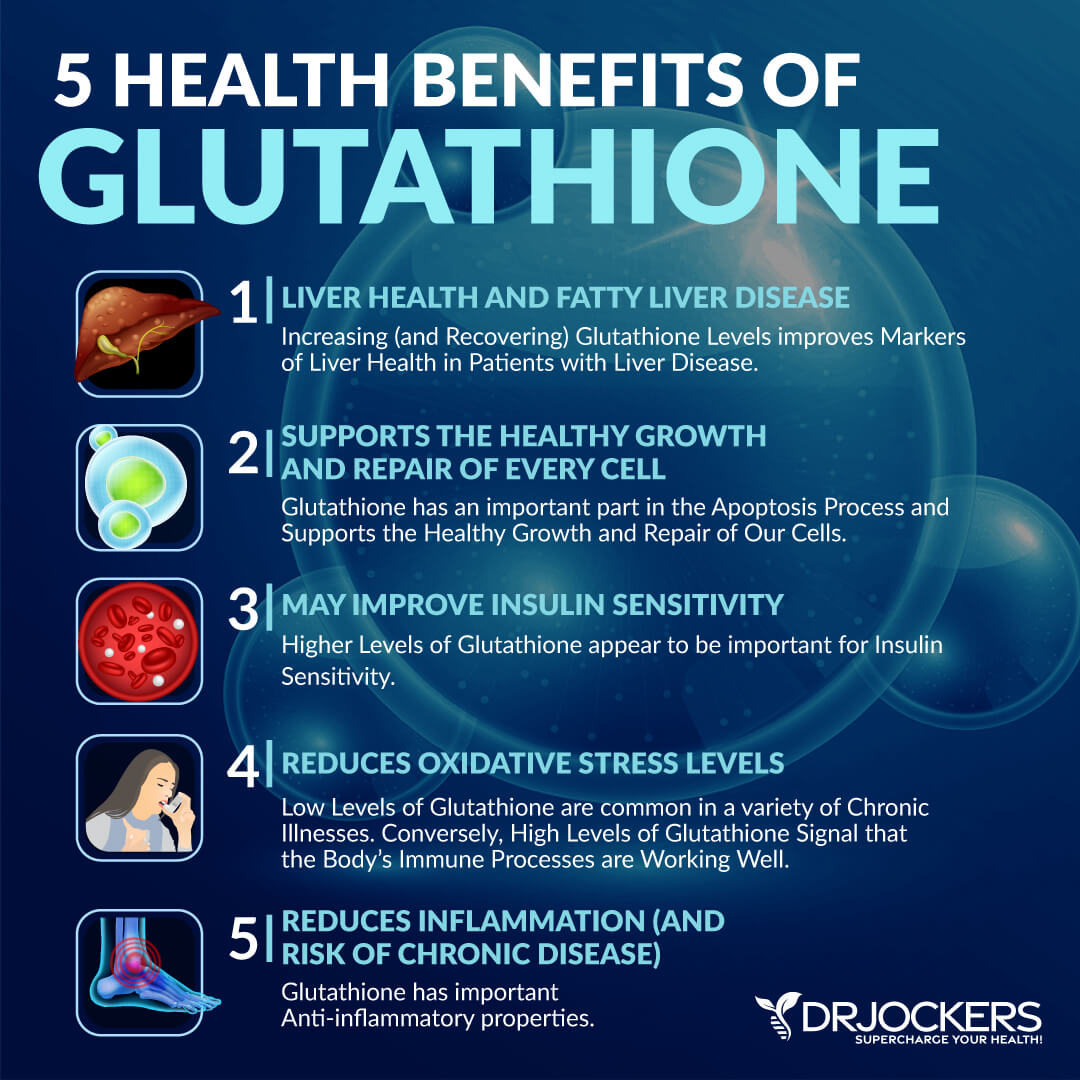
Essential Oils for Endometriosis
Essential oils are a safe, effective way to improve uterine fibroids. Clary sage, geranium, cypress, frankincense, sandalwood, and helichrysum essential oils can be helpful for endometriosis. Clary sage helps to balance hormones and reduce symptoms of endometriosis. You can apply 2-4 drops topically over the abdomen and apply a warm compress to the area or add to your bath.
Cypress essential oil can improve circulation and geranium is a powerful anti-inflammatory. Frankincense and sandalwood are helpful for reducing inflammation and supporting healing. Helichrysum essential oil can help heal scar tissue and reduce inflammation and fluid retention.
You can also try massaging the pelvic muscles with lavender essential oil. This can relax the muscles and reduce inflammation.
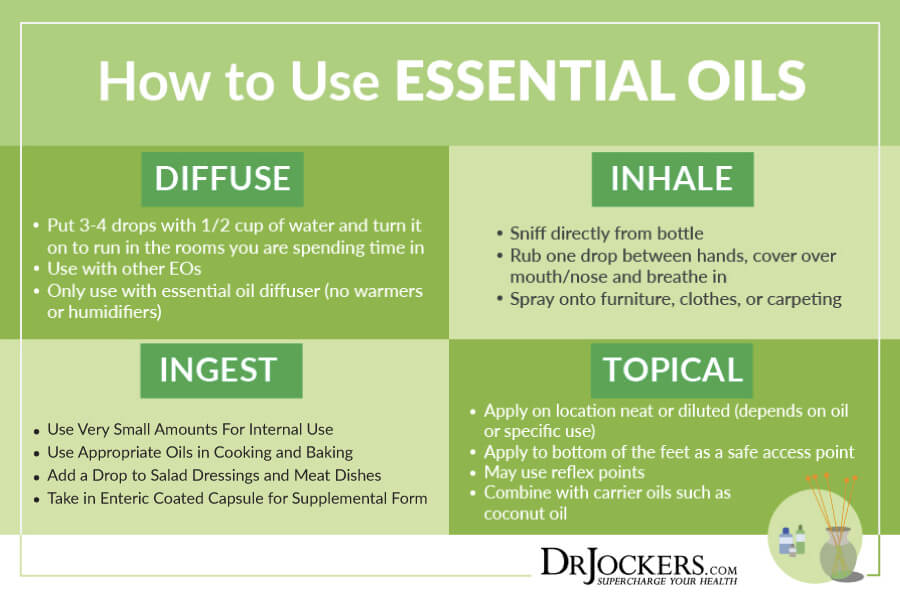
Castor Oil Packs
Regularly applying castor oil packs to the lower abdomen may soften and eliminate endometrial tissues. Castor oil can penetrate deep into the abdomen and pelvis. Castor oil is made up of phytochemicals including the fatty acid ricinoleic acid. Ricinoleic acid gives castor oil its unique healing properties and composes 90% of its chemical structure.
Using castor oil packs can support the body’s natural detoxification process by improving liver function, reducing inflammation, and strengthening the immune system. Castor oil packs can also increase the flow of lymph, the fluid that circulates throughout the lymphatic system. This helps the lymphatic system remove debris and toxins in the body.
It is important to get organic castor oil in a glass jar because pesticide residue contained in the castor oil and the plastic residue (phthalates) from the bottle can be absorbed through the skin.
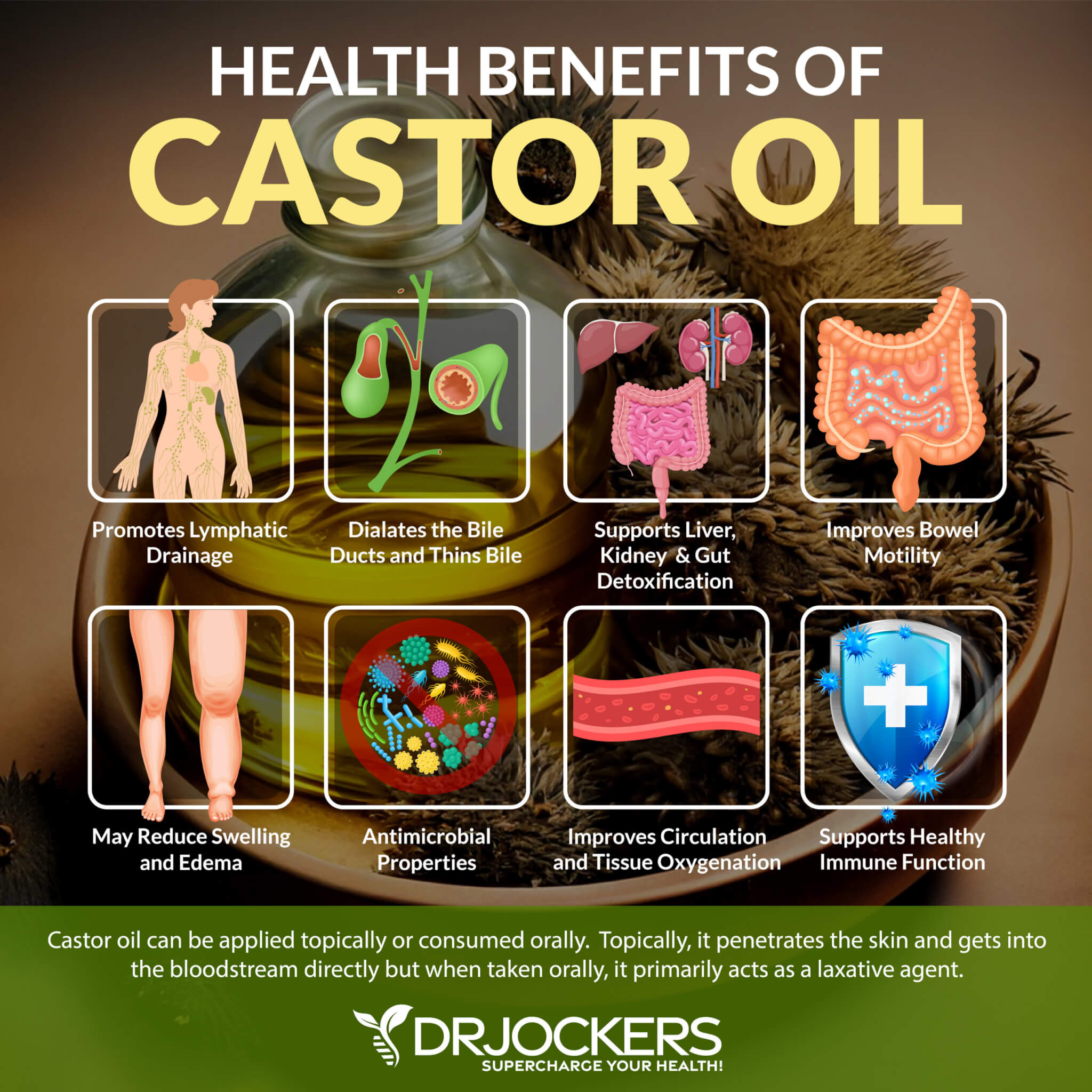
Zinc
Women with uterine fibroids often have lower levels of zinc. Deficiencies of zinc are related to inflammation and lowered immunity, both of which contribute to uterine fibroids. Zinc also has antioxidant properties and protects our bodies against damaging free radicals.
There are numerous food sources of zinc including grass-fed beef and dairy, salmon, chicken, spinach, and asparagus. Nuts and seeds such as cashews, almonds, pumpkin seeds, and watermelon seeds are also high in zinc. It is best to soak or sprout nuts and seeds to reduce the level of phytic acids which can adversely affect zinc levels.
Supplementing with zinc can be helpful for people with zinc deficiencies. Zinc helps to support your immune system, hormone balance and proper enzymatic function.

Turmeric
Turmeric is a powerful herb with abundant health benefits. It has been used for centuries to treat a variety of conditions. Turmeric has antioxidant, anti-thrombotic, and antimicrobial properties. It is a potent anti-inflammatory which can improve symptoms of uterine fibroids.
Curcuminoids are bioactive compounds found in turmeric. Curcumin is the main curcuminoid. It inhibits the growth of endometriosis through several mechanisms. Curcumin was found to suppress the growth of uterine leiomyoma cell lines cells by modulating the peroxisome proliferator-activated receptor-gamma (PPARγ) by acting as a PPARγ lignand (24)

Conclusion on Uterine Fibroids
Uterine fibroids are non-cancerous tumor growths in or on the muscular wall of the womb. The most common symptoms include heavy menstrual bleed and menstrual cycles that last more than a week. Other symptoms include pelvic pressure or pain, frequent urination, difficulty emptying the bladder and constipation.
If you want to work with a functional health coach, I recommend this article with tips on how to find a great coach. On our website, we offer long-distance functional health coaching programs. For further support with your health goals, just reach out and our fantastic coaches are here to support your journey.
Inflammation Crushing Ebundle
The Inflammation Crushing Ebundle is designed to help you improve your brain, liver, immune system and discover the healing strategies, foods and recipes to burn fat, reduce inflammation and Thrive in Life!
As a doctor of natural medicine, I have spent the past 20 years studying the best healing strategies and worked with hundreds of coaching clients, helping them overcome chronic health conditions and optimize their overall health.
In our Inflammation Crushing Ebundle, I have put together my very best strategies to reduce inflammation and optimize your healing potential. Take a look at what you will get inside these valuable guides below!
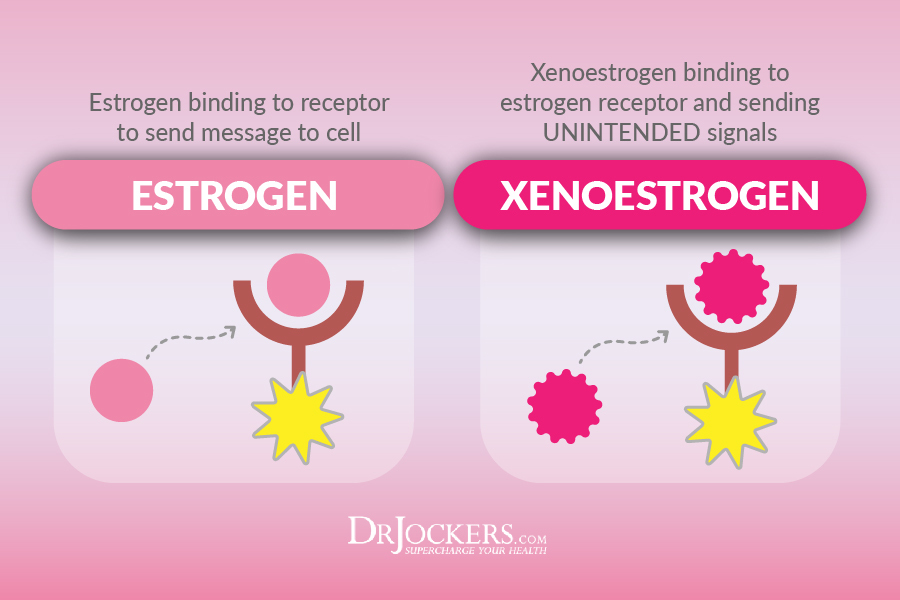
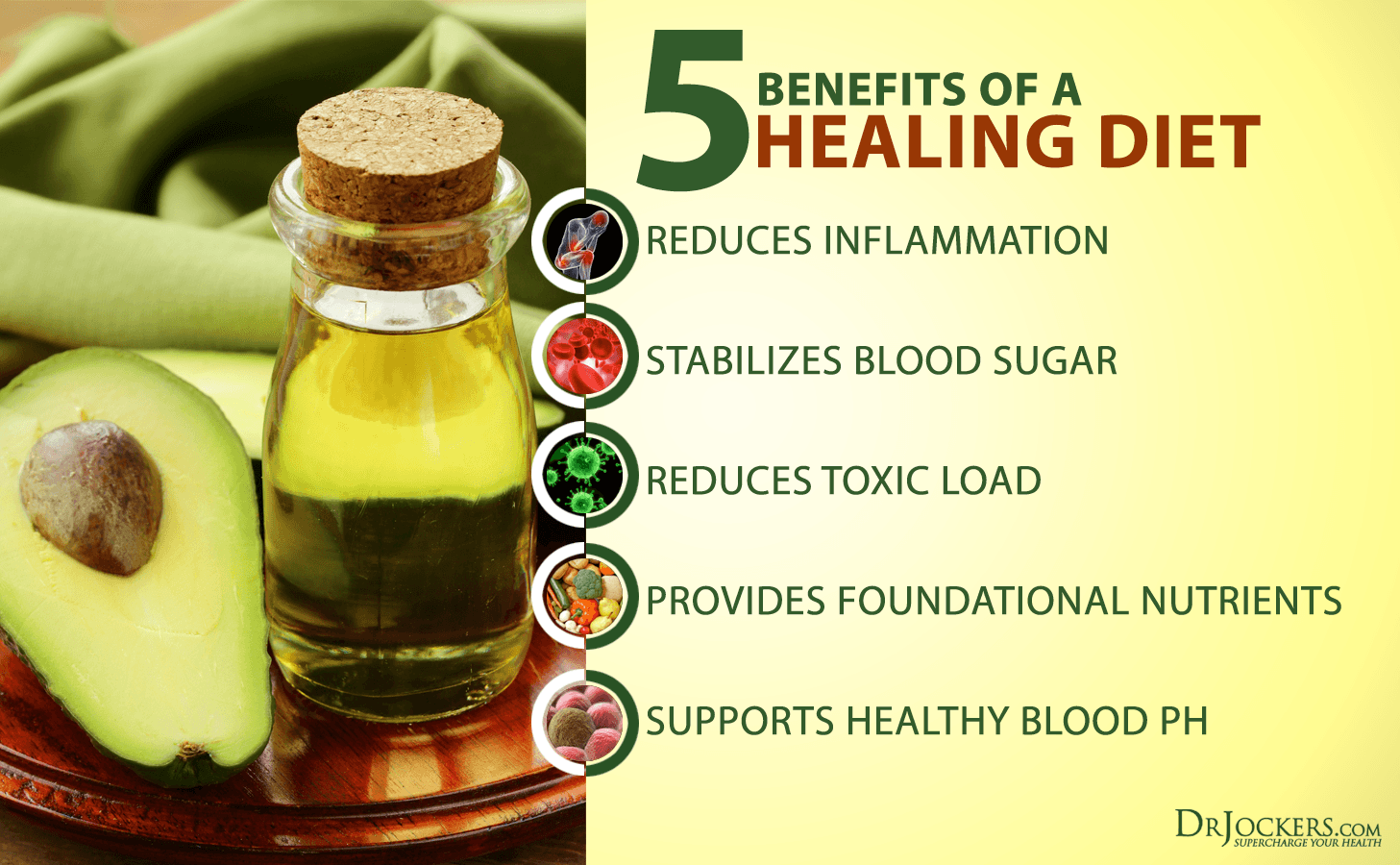




Thank you…I have been blogging for about a year and am in the process of completely revamping the website.
Thank you for this .
I have fibroids,but most methods i’ve seen,affects weight.please how do I shrink the fibroids without reducing my weight,because I am underweight
Hi to all my fellow woman i have a fibroid too and i am taking a c24/7 aim global thats a tablet last time my period was to heavy and blood clots but since i took this tablet my period become regular and not heavy like last time and my fibroid cure
So sorry to hear this Liezi!
Can this work to reduce very large fibroids? I was told I need a hysterectomy but my ovarian reserve is great. I want to get pregnant but my fibroids are huge. Thanks…
It should help Cecilia!
I tried almost everything for a while ,and it got bigger and bigger, I came to point that shrinking may be possible if it is smaller. At the end, I got myomectammy even I am 50 years old. You can ask for that and be persistent what you want. Good luck.
Sorry to hear that Ayla! Thanks for sharing!
The fact that this doctor shared this information in great detail and took the time to provide this information for free tells you that he is a true doctor that cares about the well being of humans. Period. Everthing I read online they either want you subscrube or pay for this wisdom! THANK YOU!!!
Thank you for all your support Dolly! Blessings!
Hi! I’m taking juice made of lemon, ginger, tumeric & garlic every morning,,,can that help shrink or stop my fibroids from growing??? It’s 3cm.
Yes I think it can be helpful Trizer!
I have been diagnose with 6 fibroids. Pls how do I get rid of them. I had some removed 6yrs ago and I don’t want to go under the knife again. I want to have children in future. My periods lasted for 2days last month.
I am sorry to hear this Rita! Following the approaches outlined in this article can help your body heal. I recommend working with a functional health practitioner who will customize a specific plan for you. This article provides more information: https://drjockers.com/functional-nutrition-tips-to-find-a-great-health-coach/
I have fibroids and I want to shrink them naturally
I have fibroids and I want to shrink them naturally and have children I have been using black seed oil and Honey for some time now,
Hey Agnes, I am sorry to hear. Thank you for sharing your treatment solutions. Blessings!
Can endometriosis cause musculoskeletal pain, specifically the sit bone area to the hips. I know this sounds like piriformis, but with therapy and the halting of my running, there is no relief. To add to it, my cycles are longer than they used to be, but little pain is felt.
Yes this is possible Trina. I would have this area evaluated.
Interesting article, but why use the prissy (not to mention imprecise) term “African American race”?? So, if you’re black but live in Asia instead of America, then being black wouldn’t be a risk??? 😛
What so awful about the word “black”???
Great point, we will change that to African decent.